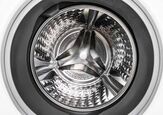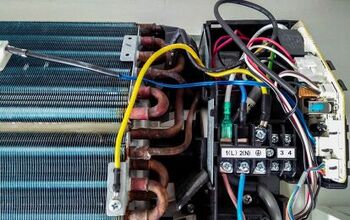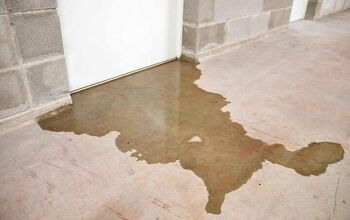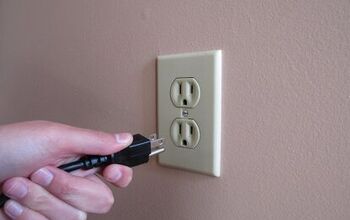Where Should I Place Glue Traps?

The average homeowner would do anything to reduce the bug population in their house. However, investing in pesticides and placing glue traps isn’t always as easy as it seems. So, where should I place glue traps to catch bugs?
Room corners and baseboards are the best spots to place glue traps to catch bugs. You can also catch many bugs if you put sticky traps beneath your furniture and behind appliances. Focus on your crawlspace, attic, and basement to catch stubborn predators like brown recluse spiders. Keep your glue traps in discreet spots where your kids and pets cannot reach.
It also helps to set up glue traps by your entry doors and beneath the windows. That way, you can catch bugs right away when they enter your home. Follow along as we explore where to place glue traps and highlight safety tips.
Are Bugs Attracted To Glue Traps?
Glue traps don’t typically attract bugs by any specific means. Whether or not bugs are attracted to glue traps depends on the location, and that’s up to you. For example, you won’t catch many spiders if you place glue traps in the middle of the floor in a room with heavy foot traffic.
Spiders prefer to walk around the corners and walls on the sides of the room. Proper glue trap placement ultimately depends on how bad your bug problem is. Similarly, you must consider the type of bugs you’re trying to catch.
Many flying insects are drawn to sweet smells, which you can use to your advantage. For example, you can place glue traps on the ground near an area with a vinegar dish. However, the best way to catch bugs with glue traps is to pay attention to where you find them and put the traps nearby.
Are Glue Traps Inhumane?
Many people consider glue traps inhumane, especially when people use them to catch small animals. This is understandable, as small rodents can get stuck in glue traps and suffer disturbing fates. After all, mice can get stuck in glue traps, and it takes a long time before they die.
Similarly, it’s hard to get mice out of glue traps without hurting them. You may even make the problem worse if you try to remove a mouse from a glue trap. That’s why you should only use glue traps meant to catch bugs if you want to avoid unnecessary suffering.
Using glue traps to catch and kill bugs is much less controversial and humane in many people’s eyes. However, it’s up to you to consider whether killing bugs is any more or less humane than catching small animals, like mice.
Where To Put Glue Traps To Catch Bugs
You have plenty of freedom regarding where to put sticky traps to catch bugs. However, you must consider that even the smallest sticky traps may harm your pets and children. That’s why you must only put glue traps in spots your pets and kids cannot reach.
Stick to glue traps meant for bugs, as they’re usually smaller and less enticing to children and pets. Think carefully about whether your children or pets could reach the glue trap before you leave it there. Luckily, there is no shortage of great spots to place glue traps to catch bugs, such as:
1. Room Corners
You’re not alone if you’ve ever found spiders and silverfish in the corners of your rooms. Bugs often gravitate to corners because they provide nice hiding spots, both for nesting and catching prey. For example, brown recluse spiders typically stick around dark corners, both to eat and create egg sacs.
Many bugs also travel along the baseboards and eventually make their way to the corners mid-journey. You can take advantage of this and catch the bugs before they continue their journey. Place glue traps in the corners of rooms where you typically find bugs.
2. Under Furniture
Have you ever moved furniture to clean the floor and found a bunch of spiders? If so, you’re not alone, and you shouldn’t be surprised. Insects and arachnids love hiding beneath furniture because it can make them feel secure.
Furniture can provide plenty of cover, shroud them in darkness, and let them easily lay eggs. Some bugs even use your furniture as an escape route to get away from predators. You can catch plenty of bugs at home if you place glue traps under your couches, chairs, and even beds.
That’s especially true if you set your furniture up to sit against the wall. However, bugs even hide beneath furniture in the middle of the room in many cases. Make sure your pets and children cannot reach the glue traps you place beneath your furniture.
3. Near Windows And Doors
Windows and doors are common entry points for many types of pests, such as spiders, flies, gnats, and mosquitoes. That’s especially true if you have old, weathered windows and doors with gaps and cracks. Such gaps and cracks can not only let bugs in, but they can also make your HVAC system work much harder.
This can waste money, as your HVAC system must run more often to keep up with the temperature loss. Not only should you patch these gaps and cracks or replace your doors and windows, but you should also place glue traps near them. Many bugs can fit through even the tiniest cracks, so glue traps are often necessary even if you have weatherstripping.
For example, you can catch many bugs if you place glue traps beside your door or under your window behind a potted plant. That way, you won’t have to look at the glue trap, and the added cover can help you catch more bugs.
4. Baseboards
Some bugs crawl and fly through the center of rooms without a care in the world. However, many nefarious bugs, like black widows and brown recluse spiders, stick to the perimeter of the room. Doing so helps them go by undetected as they hunt their prey and lay egg sacs.
You can reduce the bug population in your home if you set up several glue traps along the baseboards throughout your home. First, you must focus on rooms where you find the most bugs.
Some people must place glue traps along the baseboards in each room. Don’t throw your glue trap away after you catch a handful of bugs. The scent of dead bugs in the trap can attract more of the same spider or insect, so let it sit there for a while.
5. Attic, Basement, And Crawlspace
You’re not alone if you dread going downstairs only to be greeted by bugs in your basement. Attics, basements, and crawlspaces are often hotspots for all types of bugs. The seclusion and warmth in such areas are enough to make almost any type of bug feel comfortable.
Naturally, the more harmless bugs there are in your basement, the more predators will show up. That’s why many people find brown recluses in their basements. Basements and attics are like buffets to predatory bugs who hunt and kill other bugs.
Follow the aforementioned patterns and place glue traps along the walls, beneath furniture, and behind boxes in your basement and attic. You can also use natural repellents, like peppermint oil, to deter bugs in these spaces.
What Bugs Can You Catch With Glue Traps?
You can catch everything from flies, mosquitoes, and gnats to centipedes, spiders, and cockroaches with glue traps. Many homeowners catch silverfish with glue traps, as they often travel along walls and hide beneath furniture. The type of bugs you catch with glue traps ultimately depends on where you live.
Ideally, you should only buy sticky traps that are meant for bugs. You can find bigger glue traps meant for rodents, but they are controversial and even dangerous. The danger comes from rodents urinating upon getting stuck, which can spread diseases.
That’s not an issue with bugs, luckily. It’s worth hiring a pest control service to spray your home with preventive treatments as well. That way, the glue traps can kill existing bugs, while the pesticides keep more bugs from coming in.
Summing It Up
You can catch and kill many bugs if you place glue traps along your baseboards and beneath your furniture. Set up some glue traps in room corners to catch bugs that travel along the perimeter of the rooms in your home. It’s also important to place sticky traps in common bug hotspots, like attics, basements, and crawlspaces.
Related Guides:
- How To Control Pests Without Pesticides
- What Is The Best Time Of Year To Hire An Exterminator?
- How To Keep Bugs Out Of Your Pool

Nick Durante is a professional writer with a primary focus on home improvement. When he is not writing about home improvement or taking on projects around the house, he likes to read and create art. He is always looking towards the newest trends in home improvement.
More by Nick Durante



























